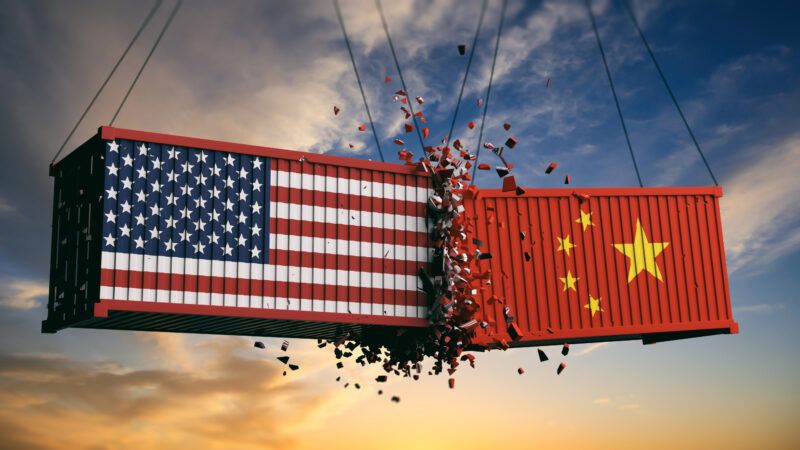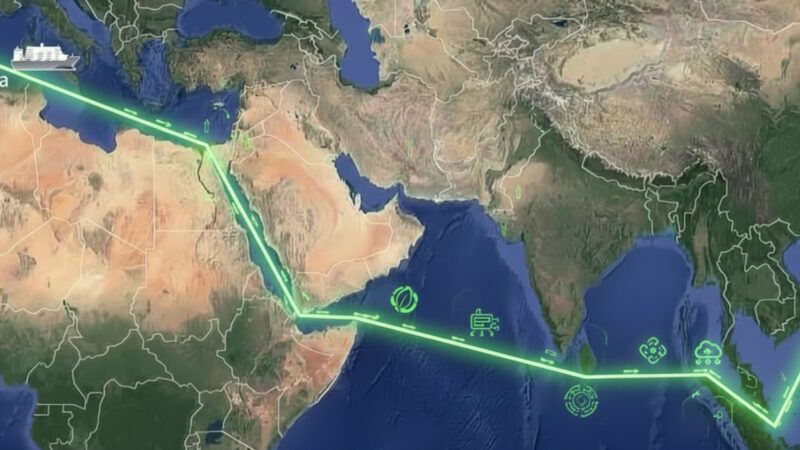 The Fit For 55 package is the culmination of the EU's efforts to accelerate the energy transition and lead the fight against the climate emergency. (Getty Images)
The Fit For 55 package is the culmination of the EU's efforts to accelerate the energy transition and lead the fight against the climate emergency. (Getty Images)
Europe leads green shipping with new Fit for 55 regulations: AFIR, FuelEU, EU ETS
We analyse two measures included in the Fit for 55 package; the Alternative Fuel Infrastructure Regulation (AFIR), which defines the minimum alternative energy supply infrastructure, and FuelEU Maritime + ReFuelEU, which aims to reduce emissions from energy consumed by the maritime and aviation sector by limiting GHG intensity.

Javier Garrido is a researcher at the Center of Innovation and Transport (CENIT) and PhD student at Port de Barcelona.

Maurici Hervas is a researcher at CENIT and PhD student in energy transition at the Port of Barcelona.
 The Fit For 55 package is the culmination of the EU's efforts to accelerate the energy transition and lead the fight against the climate emergency. (Getty Images)
The Fit For 55 package is the culmination of the EU's efforts to accelerate the energy transition and lead the fight against the climate emergency. (Getty Images)
How did the current European climate policy evolve?
The 2016 winter package launched a series of measures to decarbonise the EU economy and comply with the Paris agreements. In 2019 they set out a long-term European strategic vision on climate, targeting full decarbonisation by 2050. The Green Deal took up these objectives and set out the policies to be developed.
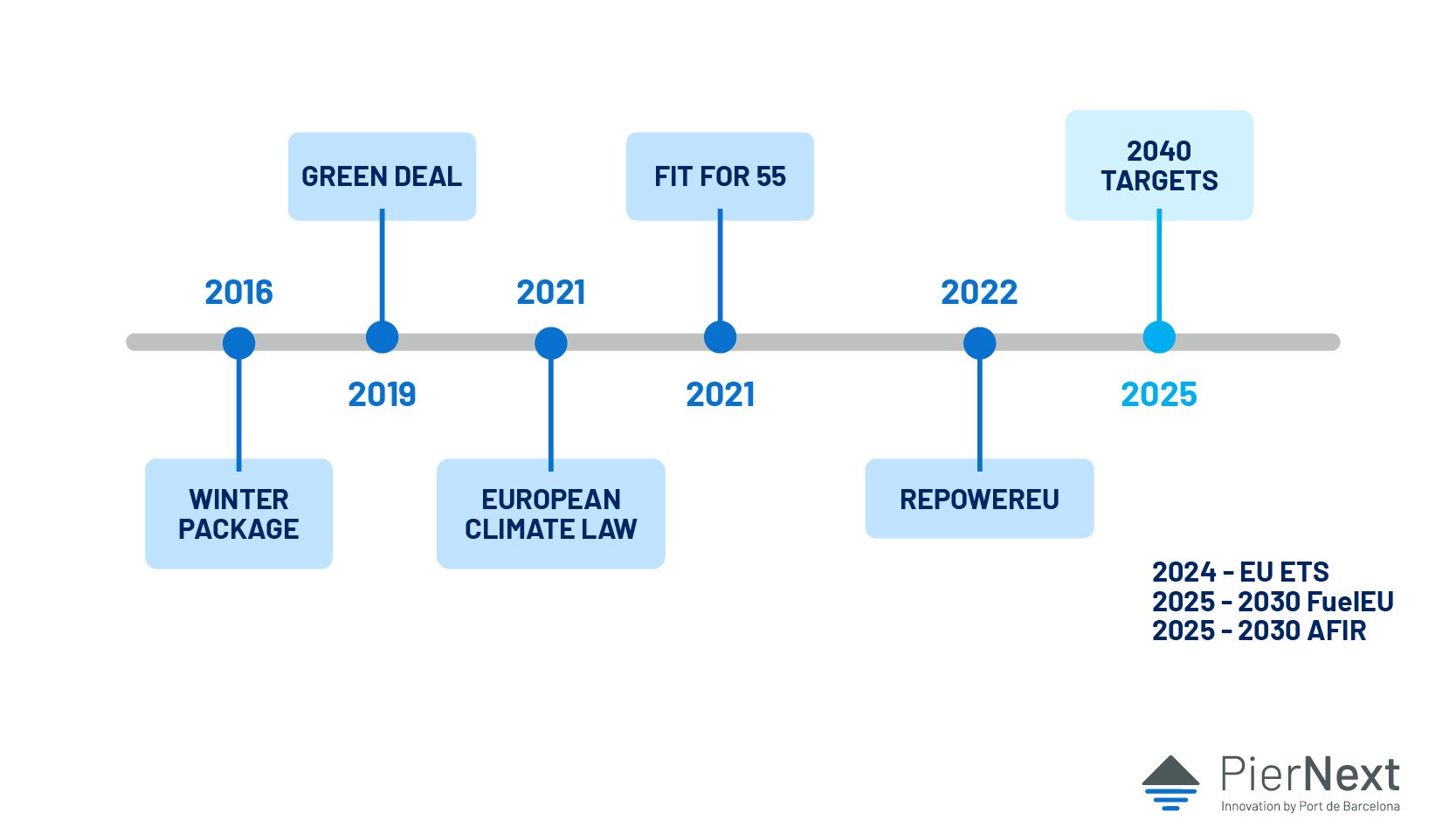
This agreement was translated into legislation through the European Climate Act in 2021 and a series of concrete measures through Fit for 55. Finally, following Russia's invasion of Ukraine in 2022, the EU adopted another package called REPowerEU with two clear objectives;
1- Increase the resilience of the European economy.
2- Reduce its dependence on Russian resources.
Fit for 55: accelerating energy transition
At the time of publication of this article, we are in the final stages of approving the Fit for 55 measures and in the public consultation phase to define the decarbonisation targets for 2040.
The Fit For 55 package of measures has been the culmination of the EU's efforts to accelerate the energy transition and become a front-runner in the fight against climate emergency. These measures promote improving energy efficiency, decarbonisation, incentivising emission reductions from industry (EU ETS), etc. and include:
- Alternative Fuel Infrastructure Regulation (AFIR): defines minimum alternative energy supply infrastructure.
- FuelEU Maritime + ReFuelEU: aims to reduce emissions from energy consumed by the maritime and aviation sector by limiting GHG intensity.
- Régimen de comercio de emisiones (EU ETS): extends the scope of the Emission Trading System to the maritime and aviation sectors and foresees the buildings and shipping sectors.
- Renewable Energy Directive (RED): requires national plans to meet renewable energy targets.
- Energy Efficiency (EE): increases energy efficiency targets for buildings, industry and transport.
- Energy taxation (ET): facilitates the implementation of renewable fuels through taxation by reducing their rates.
- Social climate fund: aimed at ensuring a just transition by supporting vulnerable actors.
- Carbon border adjustment (CBAM): measure to avoid offshoring due to the taxation of emissions.
The measures that most directly affect the maritime sector are the extension of the EU ETS, which has already been discussed in this article, FuelEU Maritime, AFIR and Energy Taxation.
AFIR: ensuring recharge and supply
The new Alternative Fuels Infrastructure Deployment Regulation (AFIR) sets mandatory deployment targets for electric and hydrogen recharging infrastructure for the road transport sector, for the supply of OPS at seaports and inland waterways, and for the supply of electricity to aircraft at airports.
The provision of a minimum recharging and supply infrastructure in the EU will put an end to consumer concerns about the difficulty of recharging or refuelling different means of transport.
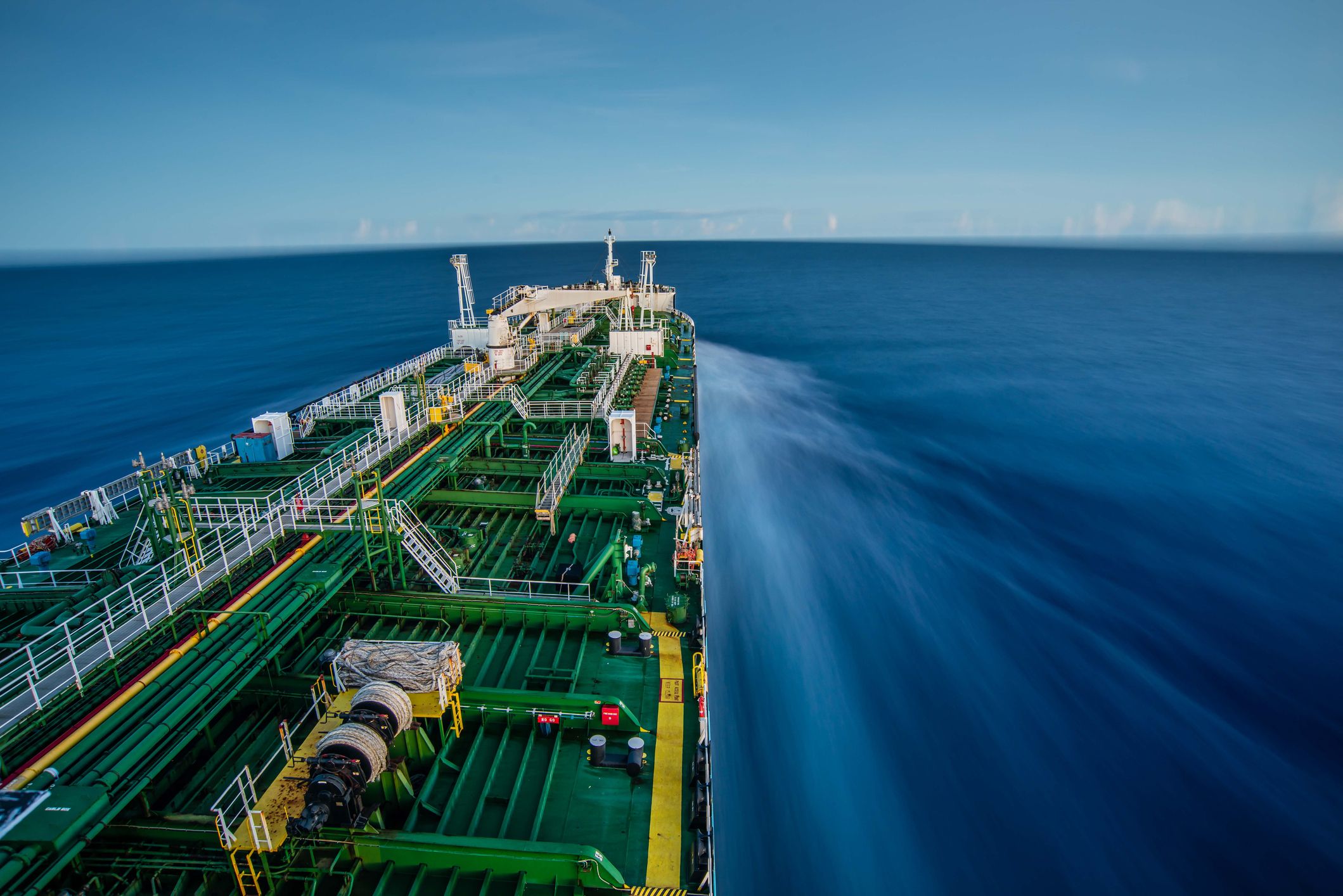
AFIR will be a turning point for energy infrastructures in ports. One of the relevant points of AFIR is the requirement to install OPS in ports.
The main features of this new regulation are:
- Requirement for ports to install OPS by 2030 for container ships and passenger ships (Ro-pax and cruise ships).
- Applies to TEN-T ports with an average of more than 100 container ship calls, 40 Ro-Pax and 25 cruise ships.
- Connection must be guaranteed for ships above 5000 GT (likely to be downgraded to 400 GT from 2025).
- Electricity has to be provided for at least 90% of the calls.
- There are exceptions for ports in outermost regions (e.g. Ceuta, Melilla) and for emergency ship calls.
On the other hand, the directive also regulates the supply of Liquefied Natural Gas (LNG) and other alternative fuels. Thus, the main requirements for ports are:
- Ensure an adequate number of LNG refuelling points to TEN-T ports from January 1, 2025.
- LNG refuelling points to ports have to include LNG terminals, mobile LNG trucks and bunkering barges.
- Member states are required to develop a policy framework including plans to ensure the supply of alternative fuels including at least hydrogen, ammonia and methanol.
On the land side, AFIR also has tangential implications for ports, as they are multimodal hubs where many modes of transport converge.
The elements to be highlighted in the field of road transport are:
- For each electric vehicle registered in a given member state, a power output of 1.3 kW has to be provided by a publicly accessible charging infrastructure. In addition, fast charging stations of at least 150 kW must be installed every 60 km along the TEN-T network from 2025.
- Dedicated electric charging stations for heavy duty vehicles with a minimum power of 350 kW have to be deployed every 60 km along the TEN-T core network and every 100 km in the extended TEN-T comprehensive network from 2025 onwards. By 2030, full network coverage must be ensured. In addition, charging stations have to be installed in secure parking areas for overnight charging, as well as in urban nodes for last mile distribution and multimodal logistics hubs such as ports.
- Deployment of hydrogen supply infrastructure that can serve both cars and trucks from 2030 at all urban nodes and every 200 km along the TEN-T core network.
AFIR will represent a turning point in port energy infrastructures and will end consumer concerns about the difficulty of recharging or refuelling
FuelEU Maritime: boosting demand for renewable fuels
As a component of the Fit for 55 package, FuelEU Maritime aims to decarbonize the economy,, in this case the maritime sector. At a strategic level, the main objective of the FuelEU Maritime measure is to promote an increase in the demand for renewable and low-carbon fuels to facilitate the widespread adoption of these fuels.
The aim is to incentivise the use of these fuels given that the majority of maritime transport will not be electrified due to the high power and long range required for intercontinental journeys.
Formally, the initiative regulates the maximum greenhouse gas (GHG) emission intensity of energy used in the maritime sector. This will be gradually reduced as we approach 2050. As it is the energy used, which will be forced to reduce its emissions, energy efficiency measures such as hull optimisation, air lubrication or speed reduction, among others, would not contribute to comply with the regulation and thus ensure the adoption of renewable fuels.
To achieve this, this measure proposes two areas of action: the navigation of ships and their stay in port.
The measure will apply to the same scope as the EU ETS, 50% of the energy used on journeys between external ports and EU ports and 100% of this for journeys between European ports and at berths.
The measure will apply to freight ships over 5000GT and passenger ships. The reduction of greenhouse gas (GHG) intensity will start to be implemented in 2025 and will increase until 2050 when it will be -80% compared to the average recorded in the EU MRV in 2020 (database where ships have to register their consumption data). Another milestone of the FuelEU will be the introduction of the mandatory use of 2% renewable fuels of non-biological origin (RFNBO) from 2035.
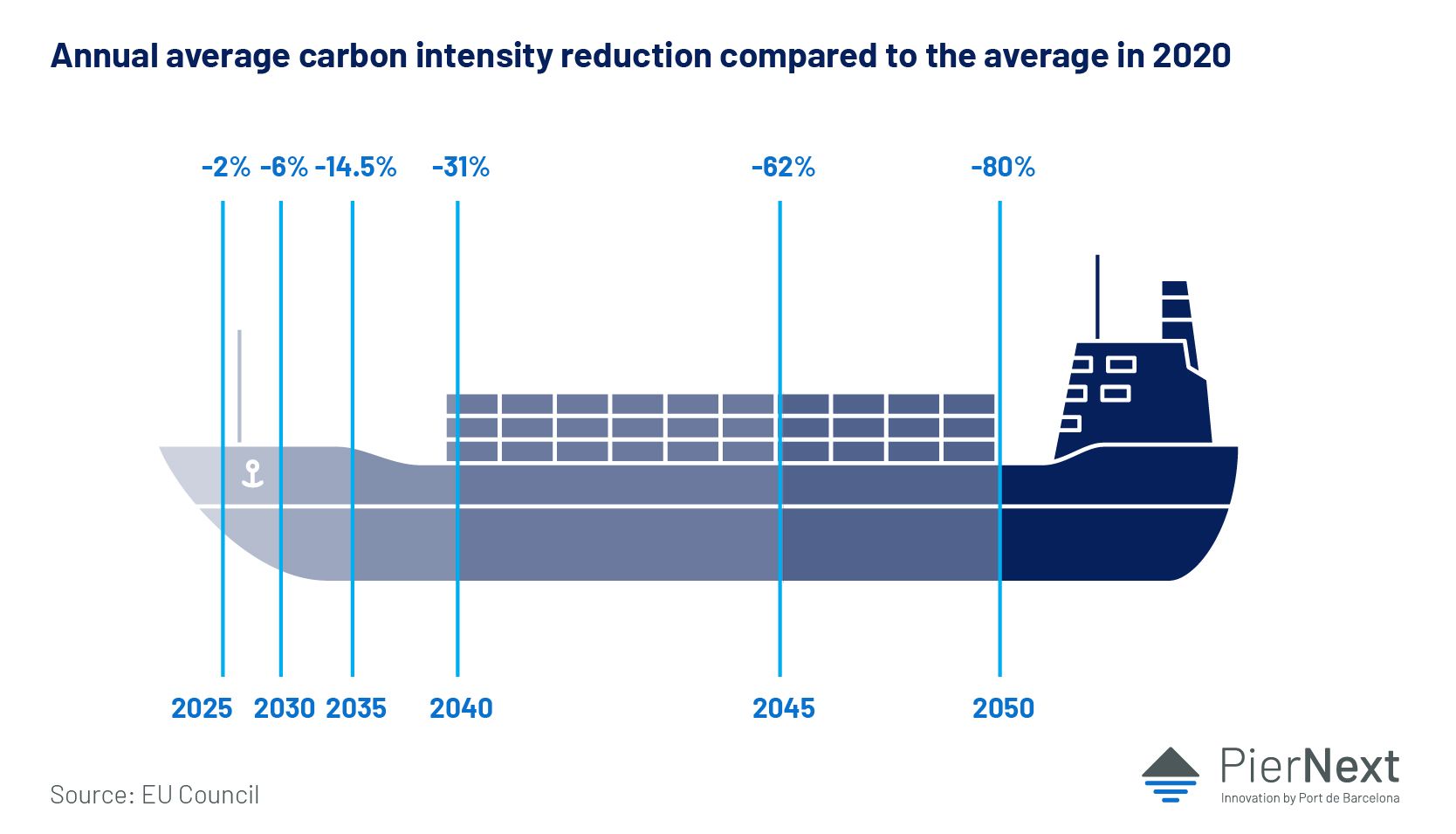
The GHG intensity calculation will use the energy consumed registered in the EU MRV and "well to wake" emission factors (calculation of all emissions from "well extraction" to the ship’s wake), a further sign of the EU's ambition to reach the whole economy to ensure its decarbonisation by 2050.
The regulation foresees two flexibility measures; groupage and bankage
Groupage will allow calculations to be made by grouping together the energy consumption and emissions of several ships. This will make it possible not to discourage the use of fuels and/or engines that allow a higher GHG reduction than required by the timetable, such as ships powered by green methanol engines. This will allow zero emission ships to be pooled with ships that do not meet the target reductions, bringing the pooled balance below the limit. This is important to pursue the strategy of creating the ecosystem (demand, training, supply) of operating on zero-emission fuels.
Banking has similar virtues, allowing to pass on part of the positive balance in the following period, and in case of a negative balance, allowing to compensate it (limited to 2%) during the following period with an "interest" of 10%, making the implementations of lower emission energies more flexible.
At a strategic level, FuelEU Maritime wants to promote an increase in the demand for renewable and low-carbon fuels
How will it impact the port sector?
In the port sector, FuelEU Maritime requires that from 2030 onwards, container and passenger ships moored at quayside cover their electricity consumption by connecting to the OPS of the ports affected by AFIR. This ensures the demand for the infrastructures required by AFIR. Member States may decide to extend this requirement to other ports (or parts) outside the scope of AFIR. From 2035, the obligation for the above-mentioned ships to connect will be extended to all EU ports with OPS.
A number of exceptions are foreseen;
- Stopovers below 2 hours.
- Use of alternatives to OPS (to be defined by the European Sustainable Shipping Forum).
- For reasons of force majeure.
- A number of other exceptions are also defined, which will be limited to 10% of calls or 10 calls (lower figure) from 2035 onwards.
- In case of insufficient power supply to OPS
- System incompatibility (if the ship's system is AFIR certified).
- OPS not available in port.
At this stage, the need to connect at anchor is not envisaged, but the possibility is left open for consideration as technologies advance.
Failure to comply with the above measures will result in penalties to be imposed by the verifier and collected by the administrative authority where the company responsible for the ship is registered. These can be for negative emission reduction balance at a rate of €2,400 per tonne of VLFSO equivalent or for unjustifiably failing to connect to the OPS by adding €1.5 per kWh of energy corresponding to the scale in question. Finally, penalties are also envisaged for not consuming the minimum RFNBOs.
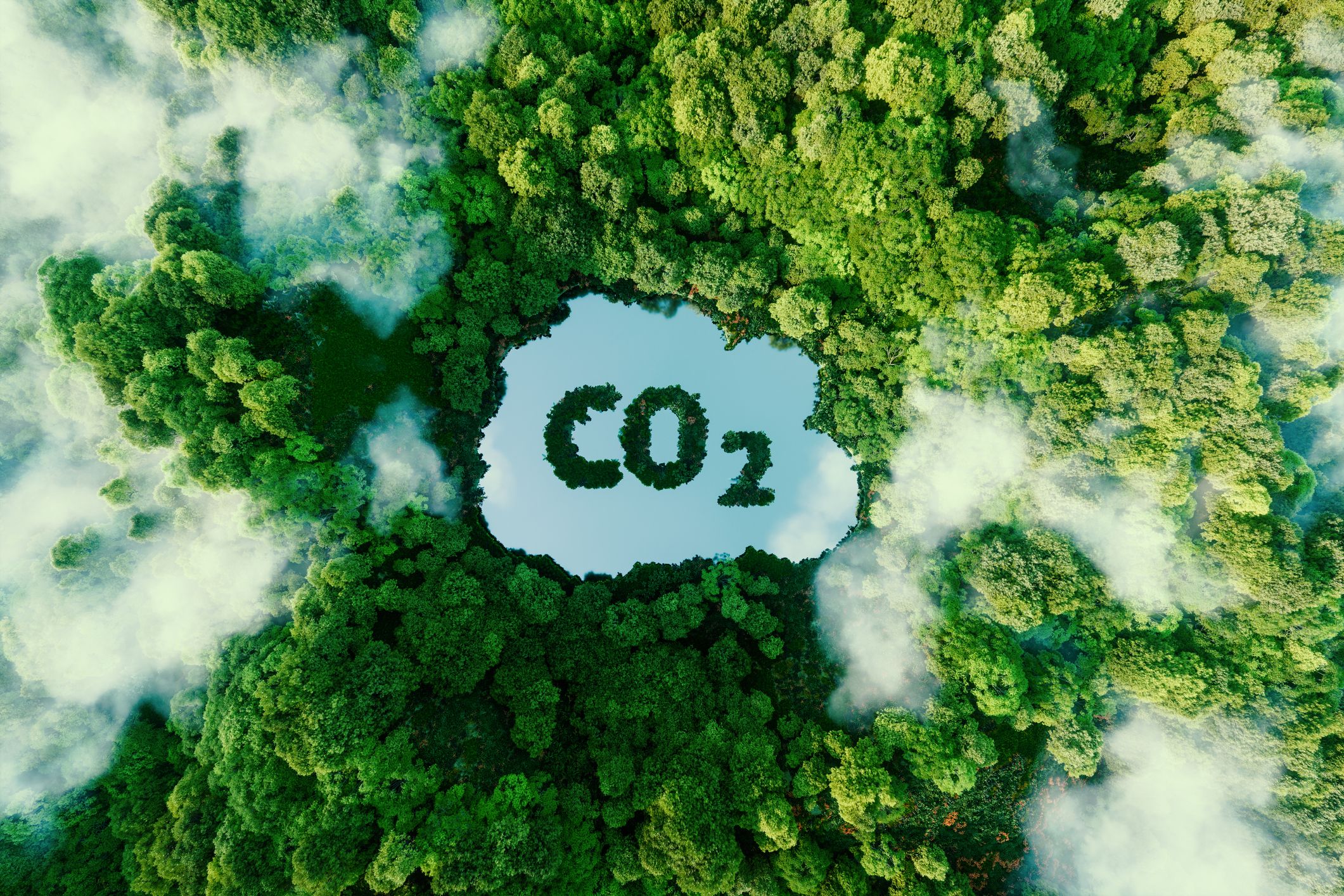
Synergies between Fit for 55 measures
The Fit for 55 package is comprehensive and sets out a series of measures that respond to a strategy. They are therefore strongly interrelated. The cross-cutting objective is the reduction of GHG emissions, which is why it is necessary to act on the source of energy, its vectors, its consumption and to remedy possible imbalances.
On the one hand, FuelEU Maritime modifies the demand for fuels, forcing the use of renewable fuels and, on the other hand, Energy Taxation incentivises the use of renewable fuels with tax rebates, mitigating the impact of the former. In order to produce these fuels, a large supply of green electricity will be needed, and this is where the RED (Renewable Energy Directive) comes in, setting very high renewable penetration targets.
On the other hand, AFIR ensures that the infrastructure for the supply of renewable energy will be in place to enable the implementation of the FuelEU and the CO₂ standards for cars and vans. Another demand-side measure is energy efficiency, which will be necessary to cope with all the electrification that is envisaged, mitigating the huge increase in electricity consumption that is foreseen.
A cross-cutting measure that will act on the market is the EU ETS, which taxes emissions from a range of sectors, now includes maritime and plans to include land transport and buildings. This measure will incentivise the successful implementation of all measures by internalising the externalities of emissions; as greener energy is used and energy efficiency is improved, the cost of emission allowances can be reduced or contained.
In the transitional period, the funds raised will go to the innovation fund to accelerate the transition and to the social climate fund to do it in a fair way by supporting vulnerable households and businesses.
Finally, to safeguard European industry and reduce carbon leakage, border adjustment mechanisms will be defined to prevent climate relocation by taxing imports of carbon-intensive products.
Repower EU: empowering the European Union
Russia's invasion of Ukraine has massively disrupted European and global energy markets. REPowerEU is the European Commission's plan to end dependence on Russian fossil fuel imports. REPowerEU is a plan to save energy, produce clean energy and diversify energy supplies. It is backed by financial and legal measures to build the new infrastructure and energy system that Europe needs.
This plan has 4 essential pillars:
Savings: All citizens, companies and organisations can save energy. So contingency measures for supply interruptions will be necessary.
Diversification: The EU is working with international partners to find alternative energy supplies. In the short term, we need alternative supplies of gas, oil and coal as quickly as possible. And for the future we will also need renewable hydrogen.
Accelerating clean energy: REPowerEU will accelerate the green transition and drive massive investment in renewables. We must also enable industry and transport to replace fossil fuel use more quickly to reduce emissions and dependencies.
Investment and reform: Additional investment of €210 billion is needed between now and 2027 to achieve our independence from Russian fossil fuel imports, which currently cost European taxpayers around €100 billion a year. The Commission proposes that Member States develop national REPowerEU plans to implement these new priorities.
Actions to be completed by 2027 include:
- Investments in an integrated and adapted network of gas and electricity infrastructure.
- Increased ambition on energy savings by raising the EU-wide efficiency target for 2030 from 9% to 13%.
- An EU energy savings communication with recommendations on how citizens and businesses can save around 13 bcm on gas imports.
- Increasing the European renewables target for 2030 from 40% to 45%.
- Regulatory measures to increase energy efficiency in the transport sector.
- Finally, build 17.5 GW of electrolysers by 2025 to feed EU industry with a local production of 10 million tonnes of renewable hydrogen.
What does the future hold?
This whole series of measures derived from the Fit for 55 establishes a very demanding roadmap for companies and public administrations to decarbonise transport.
As far as maritime transport is concerned, shipping companies will be forced to make significant efforts to renew their fleet by purchasing new ships powered by alternative fuels.
On the other hand, the need to provide OPS to ports will strain the current electricity grids and force a substantial increase in their capacity, which is currently one of the main barriers. The deployment of renewables to both the port and the country will be necessary in order to guarantee green energy for ships.
Even so, ports will have to increase efforts to produce and supply alternative fuels such as hydrogen for road transport and port machinery or methanol and ammonia for ships.
In short, if all goes according to plan, by 2030 European ports will have substantially transformed on their way to sustainability and, in step with this, ships and road transport will follow suit.



